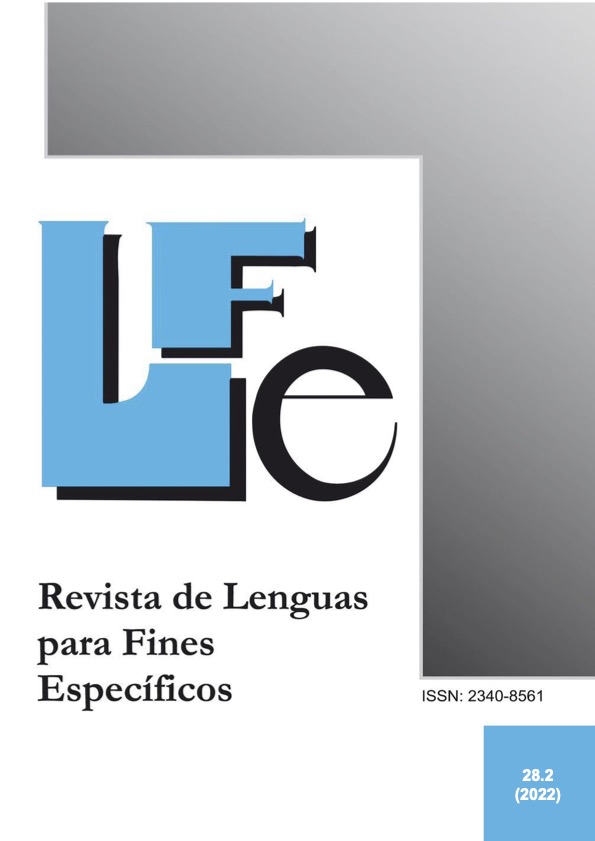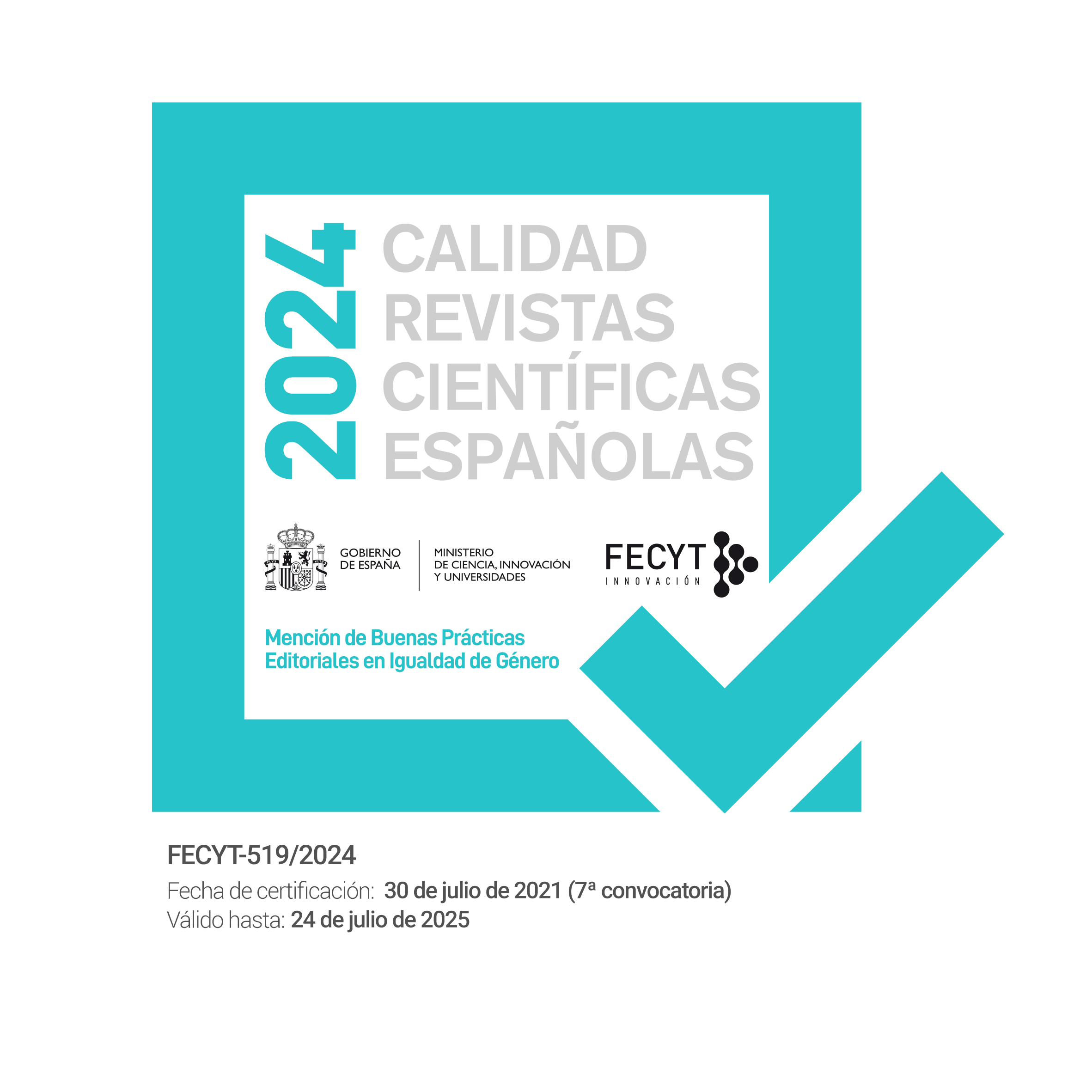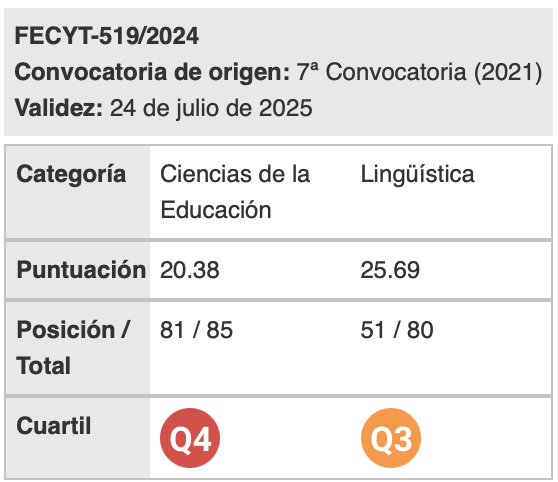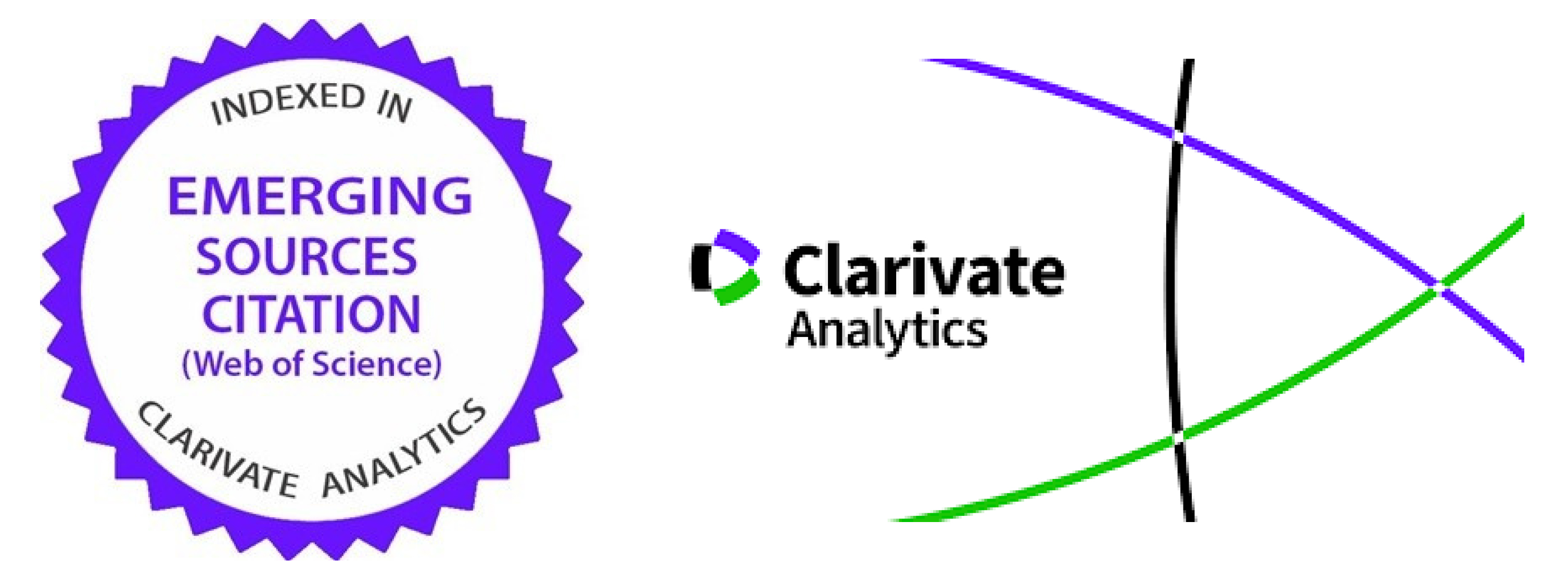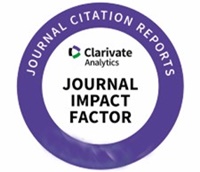Integración de la subtitulación activa en el aula: estudio de una intervención educativa
Palabras clave:
Inglés para fines específicos, subtitulación, traducción audiovisual, comprensión oral, unidad didácticaResumen
Este artículo tiene como objetivo mostrar el potencial de la aplicación de la traducción audiovisual, en particular de la modalidad de subtitulación, para el desarrollo de la compresión oral, así como su posible uso como elemento vertebrador en el diseño de unidades didácticas para la enseñanza del Inglés para Fines Específicos (IFE). Si bien es cierto que gracias a una extensa investigación se ha conseguido avanzar mucho y se han confirmado numerosas hipótesis sobre los beneficios del uso de la traducción audiovisual en la enseñanza de la lengua a un nivel general, la investigación sobre las posibilidades que puede ofrecer la traducción audiovisual en la enseñanza de lenguas para fines específicos (LFE) es todavía escasa. Es por esto, que este artículo desea también contribuir a esta línea de investigación sumándose a estudios previos realizados sobre el campo del inglés empresarial por Talaván (2006) y Ávila-Cabrera (2021) o sobre el militar por Fuentes-Luque y Campbell (2020). Tras proporcionar un marco teórico y revisión crítica de la bibliografía presente, se expone el estudio de un caso experimental basado en una unidad didáctica elaborada como parte de un proyecto nacional de investigación donde se analizan los beneficios del uso de las distintas modalidades de traducción audiovisual en la enseñanza de idiomas y que ha sido puesta en práctica dentro de una asignatura de inglés técnico. Se trata de un análisis comparativo entre los resultados obtenidos en un grupo experimental y otro de control tras la implementación de una unidad didáctica donde se buscaba fomentar la función socializadora de la lengua. La unidad didáctica diseñada está concebida tanto para entornos de enseñanza presencial como virtual y, en este caso en concreto, y debido a las restricciones sanitarias, se ha desarrollado en el formato de clase online. El estudio planteará asimismo la viabilidad de implantar unidades didácticas basadas en la traducción audiovisual como alternativa a las diseñadas con un enfoque comunicativo pero que siguen sin incorporar recursos que se alejen de los convencionales.
Descargas
Citas
Ávila-Cabrera, J. J. (2021). Reverse subtitling in the ESP class to improve written skills in English. A case study. Journal of Audiovisual Translation, 4(1), 27-49.
Ávila-Cabrera, J. J. (2022). Improving oral production skills in the Business English class through creative dubbing. ESP Today. Journal of English for Specific Purposes at Tertiary Level 10(1), 99-122. https://doi.org/10.18485/esptoday.2022.10.1.5
Ávila-Cabrera, J. J. & A. Corral Esteban. (2021). The project SubESPSKills: Subtitling tasks for students of Business English to improve written production skills. English for Specific Purposes, 63, 3-44. https://doi.org/10.1016/j.esp.2021.02.004
Ávila-Cabrera, J. J. & P. Rodríguez-Arancón. (2021). The use of active subtitling activities for students of Tourism in order to improve their English writing production. Ibérica: Revista de la Asociación Europea de Lenguas para Fines Específicos 41, 155-180. www.aelfe.org/documents/41_07_IBERICA.pdf
Baños, R. (2020). Fandubbing. En L. Bogucki & M. Deckert (eds), The Palgrave Handbook of Audiovisual Translation and Media Accessibility (pp. 209-226). Basingstoke: Palgrave Macmillan.
Bolaños García-Escribano, A. (2017). The effects of fansubs on EFL education for Translation and Interpreting students: An empirical approach. Journal of Specialised Translation, 28, 123–164.
Chaume, F. (2018). An overview of audiovisual translation: Four methodological turns in a mature discipline. Journal of Audiovisual Translation, 1(1), 40-63.
Chaume, F. (2020). Audiovisual Translation: Dubbing. Londres: Routledge.
Chiaro, D. (2017). The Language of Jokes in the Digital Age. Londres: Routledge.
Cerezo Merchán, B. 2018. Audiovisual Translation training. En L. Pérez González (ed.), Routledge Handbook of Audiovisual Translation (pp.468-482). Londres: Routledge.
Couto-Cantero, P., M. Sabaté-Carrové & M. C. Gómez Pérez. (2021). Preliminary design of an Initial Test of Integrated Skills within TRADILEX: An ongoing project on the validity of audiovisual translation tools in teaching English. Research in Education and Learning Innovation Archives, 27, 73-88. 10.7203/realia.27.20634
De Marco, M. (2012). Audiovisual Translation through a Gender Lens. Ámsterdam: Brill.
De Marco, M. (2016). The ‘engendering’approach in audiovisual translation. Target, 28(2), 314-325.
Díaz Cintas, J. (2004). In search of a theoretical framework for the study of audiovisual translation. En P. Orero (ed.), Topics in Audiovisual Translation (pp. 21-34). Ámsterdam: John Benjamins.
Díaz Cintas, J. (2009). New Trends in Audiovisual Translation. Bristol: Multilingual Matters.
Díaz Cintas, J. (2012). Clearing the smoke to see the screen: Ideological manipulation in audiovisual translation. Meta, 57(2), 279-293.
Díaz Cintas, J. & A. Remael. (2021). Subtitling. Concepts and Practices. Londres: Routledge.
Díaz-Cintas, J. & P. Muñoz-Sánchez. (2006). Fansubs: Audiovisual Translation in an amateur environment. Journal of Specialised Translation, 6, 37-52.
Fernández-Costales, A. (2012). Collaborative translation revisited: Exploring the rationale and the motivation for volunteer translation. FORUM. Revue internationale d’interprétation et de traduction, 10(1), 115-142.
Fernández-Costales, A. (2021a). Subtitling and dubbing as teaching resources in CLIL in Primary Education: The teachers’ perspective. Porta Linguarum, 36, 175-192. https://revistaseug.ugr.es/index.php/portalin/article/view/16228
Fernández-Costales, A. (2021b). Audiovisual translation in primary education. Students’ perceptions of the didactic possibilities of subtitling and dubbing in foreign language learning. Meta, 66(2), 280-300. DOI: https://doi.org/10.7202/1083179ar
Fuentes-Luque, A., & A. P. Campbell. (2020). Using subtitling to improve military ESP listening comprehension: An experimental study. Ibérica, 40, 245-266.
González-Vera, P. (2021). Building bridges between audiovisual translation and English for Specific Purposes. Ibérica, 41, 83-102. www.aelfe.org/documents/41_04_IBERICA.pdf
González-Vera, P. & A. Hornero-Corisco. (2019). Audiovisual materials: A way to reinforce listening skills in primary school teacher education. Language Value, 8, 1-25.
Gottlieb, H. (1992). Subtitling - a new university discipline. Teaching translation and interpreting. En C. Dollerup & A. Loddegaard (eds) Teaching Translation and Interpreting: Training, Talent and Experience (pp. 161–170). Ámsterdam: John Benjamins.
Hornero Corisco, A. M. & P. González-Vera. (2020). Audiovisual translation tools for the assessment of hard of hearing students. Language Value, 13, 58-77. https://doi.org/10.6035/LanguageV.2020.13.3
Ibáñez, A. & A. Vermeulen. (2015). Using VISP (VIdeos for SPeaking), a mobile app based on audio description, to promote English language learning among Spanish students: A case study. Procedia - Social and Behavioral Sciences, 178, 132-138. https://doi.org/10.1016/j.sbspro.2015.03.169.
Ibáñez, A., A. Vermeulen & M. Jordano. (2016). Using audio description to improve FLL students’ oral competence in MALL: methodological preliminaries. En A. Pareja-Lora, C. Calle-Martínez, & P. Rodríguez-Arancón (eds), New Perspectives on Teaching and Working with Languages in the Digital Era (pp. 245–156). Dublin: Research-Publishing.net. https://doi.org/10.1016/0732-118X(86)90008-5.
Incalcaterra McLoughlin, L. & J. Lertola. (2011). Learn through subtitling: Subtitling as an aid to language learning. En L. Incalcaterra McLoughlin, M. Biscio & M. Á. Ní Mhainnín (eds), Audiovisual Translation: Subtitles and Subtitling. Theory and Practice (pp. 243–263). Oxford: Perter Lang.
Incalcaterra, L., J. Lertola & N. Talaván. (2018). Editorial. Translation and Translanguaging in Multilingual Contexts, 4(1), 1–9. https://doi.org/10.1075/ttmc.00001.edi
Incalcaterra McLoughlin, L., J. Lertola & N. Talavan (eds). (2020). Audiovisual Translation in Applied Linguistics: Educational Perspectives. Ámsterdam: John Benjamins. https://doi.org/10.1075/bct.111
Krashen, S. (1982). Principles and Practice in Second Language Acquisition. Oxford: Pergamon
Lertola, J. (2012). The effect of the subtitling task on vocabulary learning. En A. Pym & D. Orrego-Carmona (eds), Translation Research Projects 4 (pp. 61–70). Tarragona: Universitat Rovira i Virgili. www.intercultural.urv.cat/media/upload/domain_317/arxius/TP4/5-Lertola.pdf.
Lertola, J. (2018). From translation to audiovisual translation in foreign language learning. Trans. Revista de Traductología, 22, 185-202. https://doi.org/10.24310/trans.2018.v0i22.3217.
Lertola, J. (2019). Audiovisual Translation in the Foreign Language Classroom: Applications in the Teaching of English and Other Foreign Languages. Voillons: Researchpublishing.net. https://doi.org/10.14705/rpnet.2019.27.9782490057252
Martínez Sierra, J. J. (2020). Audio describing humour: Seeking laughter when images do not suffice. En M. Dore (ed.), Humour Translation in the Age of Multimedia (pp. 177-195). Londres: Routledge.
Montero Pérez, M., W. Van Den Noortgate & P. Desmet. (2013). Captioned video for L2 listening and vocabulary learning: A meta-analysis. System, 41(3), 720-739. https://doi.org/10.1016/j.system.2013.07.013.
Orrego, D. (2013). Avance de la traducción audiovisual: desde los inicios hasta la era digital. Mutatis Mutandis. Revista Latinoamericana de Traducción, 6(2), 297-320.
Pedersen, J. (2011) Subtitling Norms for Television. Ámsterdam: John Benjamins.
Ramière, N. (2006). Reaching a foreign audience: Cultural transfers in audiovisual translation. Journal of Specialised Translation, 6, 152-166.
Sánchez-Requena, A. (2018). Intralingual dubbing as a tool for developing speaking skills. Special issue of translation and translanguaging in multilingual contexts. Audiovisual Translation in Applied Linguistics: Educational Perspectives, 4(1), 102–128. https://doi.org/10.1075/ttmc.00006.san
Suárez, M. del M. & F. Gesa. (2019). Learning vocabulary with the support of sustained exposure to captioned video: do proficiency and aptitude make a difference? Language Learning Journal, 47(4), 497–517. https://doi.org/10.1080/09571736.2019.1617768.
Talaván, N. (2006). The technique of subtitling for business English communication. RLFE. Revista de Lenguas Para Fines Específicos, 11(12), 313-346.
Talaván, N. (2011). A quasi-experimental research project on subtitling and foreign language acquisition. En L. Incalcaterra McLoughlin, M. Biscio & M. Á. Ní Mhainnín (eds), Subtitles and Subtitling. Theory and Practice (pp. 197–218). Oxford: Peter Lang. https://doi.org/https://doi.org/10.3726/978-3-0353-0167-0.
Talaván, N. (2013). La subtitulación en el aprendizaje de lenguas extranjeras. Barcelona: Octaedro. https://www.octaedro.com/appl/botiga/client/img/10137.pdf.
Talaván, N. (2019a). Creative audiovisual translation applied to foreign language education: a preliminary approach. Journal of Audiovisual Translation, 2(1), 53-74.
Talaván, N. (2019b). Using subtitles for the deaf and hard of hearing as an innovative pedagogical tool in the language class. International Journal of English Studies, 19(1), 21-40. https://doi.org/https://doi.org/10.6018/ijes.338671.
Talaván, N. (2020). The didactic value of AVT in foreign language education. En L. Bogucki & M. Deckert (eds), The Palgrave Handbook of Audiovisual Translation and Media Accessibility, (pp. 567–592). Basingstoke: Palgrave Macmillan.
Talaván, N. (2021). Las voces superpuestas: Fundamentos y aplicaciones didácticas. En C. Botella & B. Agulló (eds), Mujeres en la traducción audiovisual. Perspectivas desde el mundo académico y profesional (pp. 69–90). Madrid: Sindéresis.
Talaván, N., A. Ibáñez & E. Bárcena. (2017). Exploring collaborative reverse subtitling for the enhancement of written production activities in English as a second language. ReCALL, 29(1), 39-58. https://doi.org/10.1017/S0958344016000197.
Talaván, N. & J. Lertola. (2022). Audiovisual translation as a didactic resource in foreign language education. A methodological proposal. Encuentro: Revista de Investigación e Innovación en la Clase de Idiomas, 30, 3–18. www3.uah.es/encuentrojournal/index.php/encuentro/article/view/66
Talaván, N., J. Lertola & A. Ibañez Moreno. (2022). Audio description and subtitling for the deaf and hard of hearing. Media accessibilitiy in foreign language learning. Translation and Translanguaging in Multilingual Contexts, 8(1), 1-29. https://doi.org/10.1075/ttmc.00082.tal |
Vanderplank, R. (1988). The value of teletext sub-titles in language learning. ELT Journal, 42(4), 272–281.
Vanderplank, R. (2016). “Effects of” and “effects with” captions: How exactly does watching a TV programme with same-language subtitles make a difference to language learners? Language Teaching, 49(2), 235–250. https://doi.org/10.1017/S0261444813000207
Winke, P., S. Gass & T. Sydorenko. (2010). The effect of captioning videos used for foreign language listening activities. Language Learning & Technology, 14(1), 65-86. http://llt.msu.edu/vol14num1/winkegasssydorenko.pdf.
Zabalbeascoa, P. (2020). The role of humour in AVT: AVHT. En L. Bogucki & M. Deckert (eds), The Palgrave Handbook of Audiovisual Translation and Media Accessibility (pp. 667–686). Basingstoke: Palgrave Macmillan. https://doi.org/10.1007/978-3-030-42105-2_32.
Descargas
Publicado
Cómo citar
Número
Sección
Licencia
Aquellos autores/as que tengan publicaciones con esta revista, aceptan los términos siguientes:
- Los autores/as conservarán sus derechos de autor y garantizarán a la revista el derecho de primera publicación de su obra, el cuál estará simultáneamente sujeto a la Licencia de reconocimiento de Creative Commons que permite a terceros compartir la obra siempre que se indique su autor y su primera publicación esta revista.
- Los autores/as podrán adoptar otros acuerdos de licencia no exclusiva de distribución de la versión de la obra publicada (p. ej.: depositarla en un archivo telemático institucional o publicarla en un volumen monográfico) siempre que se indique la publicación inicial en esta revista.
- Se permite y recomienda a los autores/as difundir su obra a través de Internet (p. ej.: en archivos telemáticos institucionales o en su página web) antes y durante el proceso de envío, lo cual puede producir intercambios interesantes y aumentar las citas de la obra publicada. (Véase El efecto del acceso abierto).

Revista de Lenguas para fines específicos is licensed under a Creative Commons Reconocimiento-NoComercial-SinObraDerivada 4.0 Internacional License.

